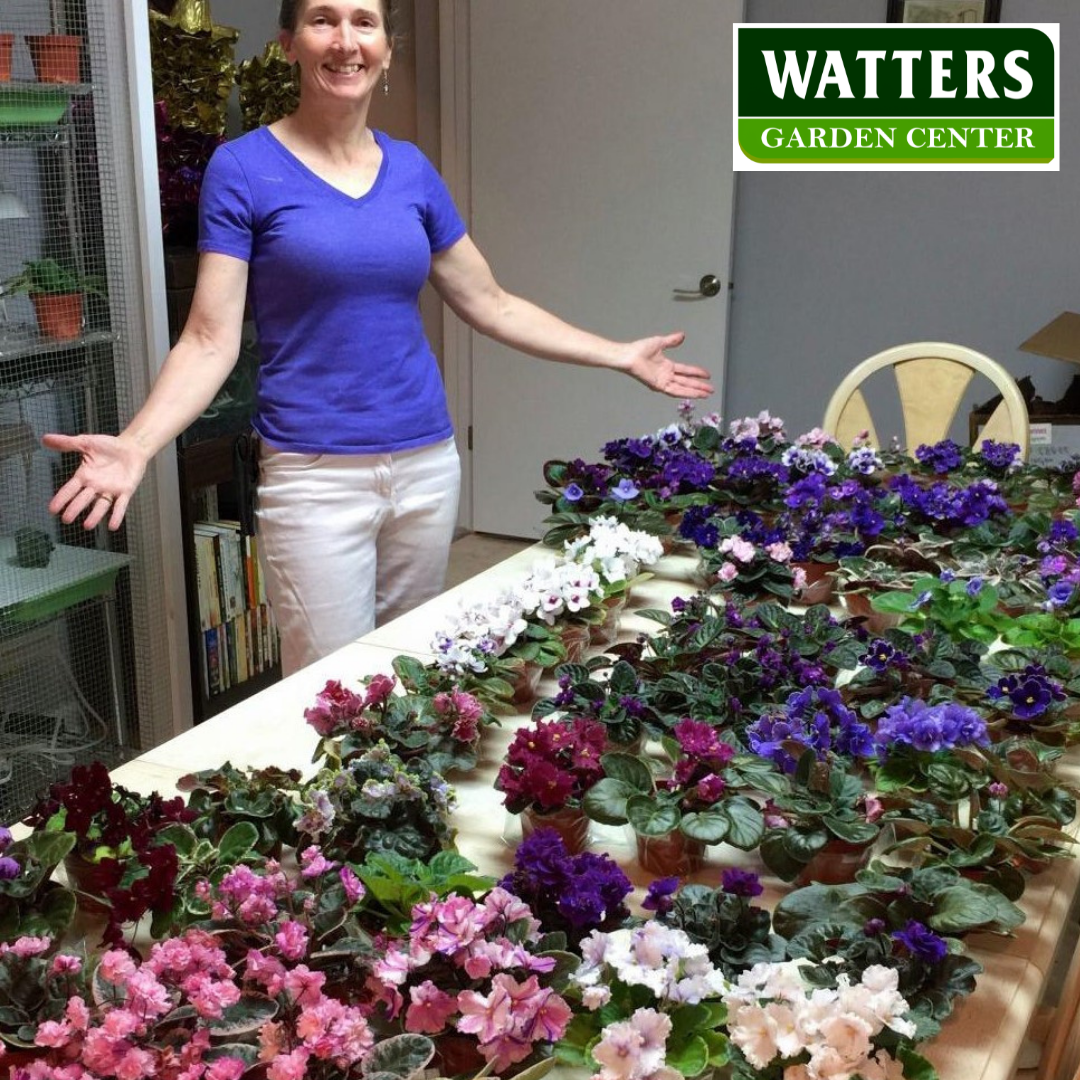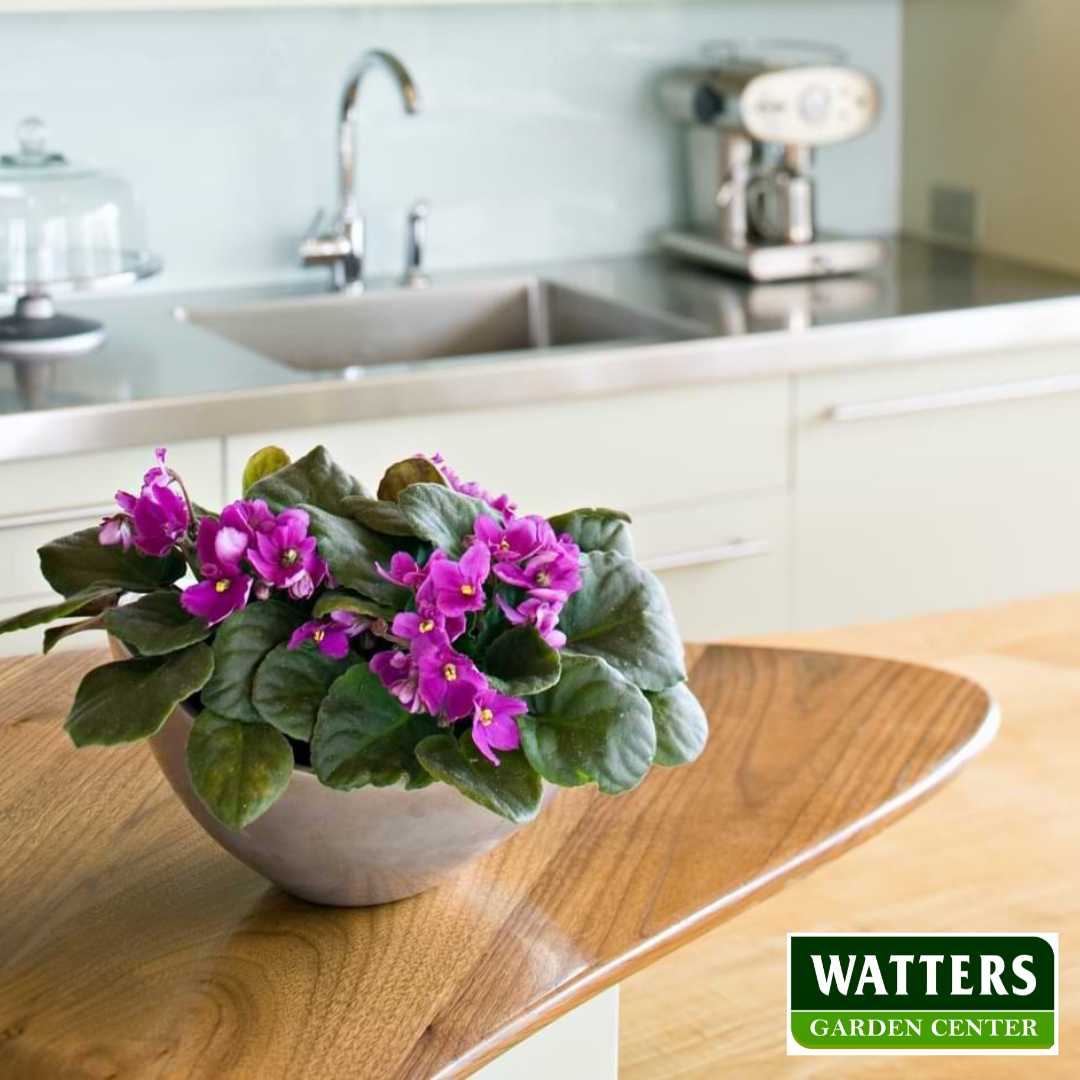by Ken Lain, the mountain gardener


Currently, there are 3200 species of African Violets. The very first violet was discovered in 1892 by Baron Walter von Saint Paul-Illaire, a German colonial official in Tanzania, thus the botanical name Saintpaulia ionantha.
African violets are the most popular houseplants for a good reason. They bloom several times each year, with soft velvety foliage, in a plethora of flower colors. African violets thrive indoors. With just a little garden experience, you find they grow to the size of dinner plants.
African Violet Care
African violets thrive indoors in bright, humid conditions. Prevent old, spent leaves from collecting on your plant. Old foliage will encourage plant rot.
Soil
We make specially formulated soil just for African Violets. Their soil must drain fast. When the plant becomes waterlogged, the leaves droop, fall and rot. Never allowing your plant to stand in water for extended periods is the number one rule of violets.
Water
Keep soil moist with warm water and strive for high humidity. African Violets appreciate a weekly light misting. Keep water from touching the leaves to prevent brown spots from forming. Water at the root level or well below the foliage.
African Violet pots are specially designed to care for and water violets without water ever touching their foliage. They are pretty and make growing violets much easier.
Temperature and Humidity
Violets are just like people. If you are comfortable, so are they. Their preferred temperature is 70ºF. Do not allow your plant to dip below 60ºF.
Plant Food
Feed twice monthly with Watters African Violet Plant Food for best bloom cycles.
Propagating African Violets
African violets can be propagated from leaf cuttings or from pups. Mature plants produce small plantlets or shoots from the side. Remove these and pot directly in Watters African Violet Potting Soil. By removing pups, you encourage better blooms from the parent plant.

Potting and Repotting African Violets
African violets do better when they are slightly underpotted. Repotting an African Violet is easy. Simply grab the plant, lift it, and replace it with a larger container. Fill the gaps with Watters African Violet Potting Soil. Be very gentle with their root system. Common signs your plant is stressed and needs to be repotted include falling leaves and overcrowding, as well as roots that protrude from the surface of the soil.
African Violet Varieties
African violets are available in single and double flowers, in all different colors, and with widely varied leaf shapes. Gloxinia is sometimes mistaken for a type of African violet. If you like African Violets, you might also enjoy the closely related Streptocarpus species or the African violet cousin, the Goldfish Plant.

2023 Garden Class Announcement
Watters Free Garden Classes start January 14 @ 9:30 am. Check out this spring’s entire class selection offered every Saturday at Watters Garden Center.
January 14 @ 9:30 am – Happy, Healthy Houseplants with Professional Style
Houseplants brighten our lives and clean the air we breathe, but not all are created equal when grown in an arid climate. Students learn the top plants grown indoors and how to care for each. Learn best practices for watering, light placement, and how to treat and prevent pests and problems.
January 21 @ 9:30 am – Top Local Landscapes with Flare
Any garden can pop with flares of color with the right plants. We’ll cover the best local companion plants, flowers, evergreens, and more. Bring a pencil and paper for notes and questions for our experts after this class.
January 28 @ 9:30 am – January is the Best Month to Plant Wildflowers
Late winter is the ideal window to start wildflower seeds outdoors. We share all the local tips that ensure these bloomers blossom beautifully. You’ll know the best seed, soils, food, and techniques that bring on the color this spring.
Until next week, I’ll be helping gardeners relax with more houseplants here at Watters Garden Center.
Ken Lain can be found throughout the week at Watters Garden Center, 1815 W. Iron Springs Rd in Prescott, or contacted through his website at WattersGardenCenter.com or Top10Housplants.com.

